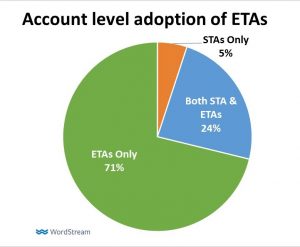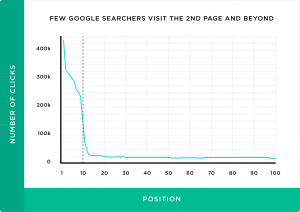Albert Einstein said, “The pursuit of knowledge is more valuable than its possession.” With all due respect to Einstein, phooey. At least in terms of knowledge management as we know it today. To capture data and information, impart it with knowledge, and derive wisdom is the “quantum theory” of doing business these days: It’s the fabric of systems and processes behind every data-driven decision, from sales to content strategy to product development.
Underlying the somewhat mystical element of how it all comes together to make every company unique is a knowledge management system, the development and implementation of which can be overwhelming. Where do you start? What’s the best fit for your company? How do you manage change? How will end users react? And, of course, the Big Bang whopper: Will it work?
I’ll answer the last one first: Yes. As far as the other concerns, these knowledge management best practices will help. It’s important to always remember that the reason you need effective knowledge management is to develop your organization’s single source of truth. It’s the only way to be sure that everyone in the organization is always presenting the right information and telling the same story.
Knowledge management best practices
1. Determine the right fit for your company
There are two popular solutions common to knowledge management: corporate wikis and internal knowledge bases.
Corporate wikis are a bit like the wild west. Anyone can add, delete, or edit content. They’re dynamite for increasing employee engagement but lacking in reliability and measurement. If you just want to build a searchable warehouse and have confidence in all your contributors, then corporate wikis may be all that you need.
Internal knowledge bases are dynamic content repositories built on software with knowledge management processes, collaboration tools, and a user experience baked in. They’re designed to capture, curate, and share knowledge efficiently and effectively. One of the biggest differences between them and wikis is that content creation and editing is reserved for specialists who can be trusted. They also function within the parameters of a content strategy, which can be as fluid as necessary for organizations to remain agile and nimble.
To learn more about both options and why we recommend internal knowledge bases, check out “Corporate wiki vs internal knowledge base: Which is better?”
2. Basic is better
One of the reasons we recommend internal knowledge bases is because the user experience should be built to streamline the complexities that tend to result in failed knowledge management initiatives. Application developers should be automating processes of capturing, curating, and sharing knowledge while adding features that actually improve the daily workflow for end users. In other words, the application helps them be more productive or more effective or more efficient. Or, best of all, all three!
Keep the “basic is better” mantra in mind while rolling out a knowledge management system too. Prioritize departments in need and introduce the system to one department at a time. Gradually expand as you dial in training, word of mouth circulates about how great the system is, and you have success stories to share with new departments and executive sponsors.
3. Measure improvements
The functional value of knowledge management will rapidly become apparent to end users in how they’re able to execute their responsibilities. They’ll be able to build better proposals faster, respond to prospects and customers with greater accuracy in near real time, and gain contextual insight into all the content relevant to their role.
The strategic value of knowledge management is that you’re able to show the value of the system to your leadership team in such a way that they can trust your reporting accuracy. Numbers don’t lie, but you need measurement capabilities to get the numbers. Plus, it makes it easier to measure ROI. You have to communicate the value of your single source of truth.
Internal knowledge base software easily allows you to measure success post-implementation. I’ll call out three of my favorite RFPIO reports that help illustrate its strategic value:
- Answer Library Insights Report: This dashboard connects you to insights on your Answer Library, including content moderation and usage, content owners, and content moderators.
- Answer Library Timeline: More of a tool than a report, this allows you to proactively set SME schedules so content auditing responsibilities are parsed out manageably instead of piling on hundreds of questions at the end of the year. From a reporting standpoint, it shows leadership how SME time is being used more efficiently.
- Answer Library Search Terms Report: Which terms are end users searching but receiving zero results for? This report delivers instant insight into which content you need to develop to meet user—and ultimately prospect and customer—needs.
Schedule monthly Answer Library health reports with team leaders. Roll those up into quarterly reports to show the value of your knowledge management solution to your c-suite.
4. Make the knowledge diverse
If knowledge is not accessible and usable at scale, then it’s probably not worth managing. Sales teams need content to answer tough prospect questions in near real time and build personalized presentations. Proposal teams need on-demand knowledge to answer questionnaires and build engaging proposals. Support teams need access to knowledge from wherever they’re working without toggling between applications to improve the customer experience.
All of this can only happen with open access to the knowledge management system. That’s why RFPIO provides unlimited user licenses, so everyone who can benefit from knowledge can also access knowledge. Technical, product development, sales, marketing, legal, security…all of this content has value and will strengthen your knowledge management. The right system will help you restrict access to sensitive content that may include private, confidential, or proprietary information.
Sorry, Albert, I meant no offense
Back to Einstein. In all fairness, knowledge management systems didn’t exist in his day. We can do a lot more with knowledge than what was possible 80 years ago (we can actually do a lot more with knowledge than we could one year ago), so I meant no disrespect by my opening “phooey.” Perhaps another Einstein quote suits knowledge management best practices more aptly: “Out of clutter, find simplicity. From discord, find harmony. In the middle of difficulty, lies opportunity.”
Business & Finance Articles on Business 2 Community
(58)
Report Post




